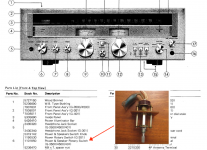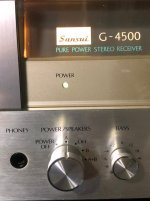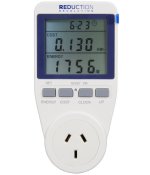In the US: FM Mono was great. Stations had Vinyl music sources. Tuners had low distortion, great signal to noise ratios, and great capture ratios. Then FM stations changed: Add 67 kHz subcarrier. Add multiplex's 19kHz pilot and modulated 38kHz subcarrier. Some stations now add spread spectrum digital modulation.
Now FM tuners have a hard time getting quality sound. FM stations use CD and other digital sources. FM stations use whatever DAC that they choose, un announced. Some stations are OK. But I find I can get better quality on some stations using streaming instead of FM.
Now FM tuners have a hard time getting quality sound. FM stations use CD and other digital sources. FM stations use whatever DAC that they choose, un announced. Some stations are OK. But I find I can get better quality on some stations using streaming instead of FM.
Hi 6A3sUMMER,
There are so many variables, and questionable tactics used that the question of digital vs analogue is moot. The chain used in the audio path isn't static either, so attempts to define an FM station are wasted. You can't nail anything down thees days.
-Chris
Well, you never used to know what tape or cart machine they were using, tape used or anything along those lines. But take it a step backwards. When the recording studio creates the content, you would never know what recording console they were using, outboard gear, mods to same, recording machine, tape used, "0" dB level or tape speed. Then, on FM, modulation level used, brand of compressor, compression ratio or limiter. Connection to the transmitting site is also unknown.FM stations use CD and other digital sources. FM stations use whatever DAC that they choose, un announced. Some stations are OK. But I find I can get better quality on some stations using streaming instead of FM.
There are so many variables, and questionable tactics used that the question of digital vs analogue is moot. The chain used in the audio path isn't static either, so attempts to define an FM station are wasted. You can't nail anything down thees days.
-Chris
NEED HELP finding a rotary power switch.
Hi All,
I need to find a rotary switch the will switch Mains AC power and low voltage. It would be something similar to this one used in the Sansui receiver.
What I want to do is to replace the power switch that comes with the A9 amp with a 3 position rotary switch so I can have the following options:
Position 1: Mains power OFF
Position 2: Mains power ON and normal bias (500 ohms Rk for original designed plate current)
Position 3: Mains power ON and higher bias (300 ohms Rk for higher plate current)
The switch should work the similar way Sansui uses it to switch power and speakers.
The photos are only for reference. The switch does not have to be like the one in the picture but it's important to have the Mains switch section separate from the low voltage switch section.
Thanks for the help.
fdlima
Hi All,
I need to find a rotary switch the will switch Mains AC power and low voltage. It would be something similar to this one used in the Sansui receiver.
What I want to do is to replace the power switch that comes with the A9 amp with a 3 position rotary switch so I can have the following options:
Position 1: Mains power OFF
Position 2: Mains power ON and normal bias (500 ohms Rk for original designed plate current)
Position 3: Mains power ON and higher bias (300 ohms Rk for higher plate current)
The switch should work the similar way Sansui uses it to switch power and speakers.
The photos are only for reference. The switch does not have to be like the one in the picture but it's important to have the Mains switch section separate from the low voltage switch section.
Thanks for the help.
fdlima
Attachments
anatech,
Signal sources, good and bad . . .
You never were able to nail down all the details of your music source, whether FM, digital, vinyl, etc. Who knows if the FM station is playing vinyl on a USB turntable?
Of course, a lot of people do not like interstage transformers in their power amps. Others do.
Now . . . how many microphone transformers, how many sound board transformers, and other paths use transformers, before you get your music source into your power amp?
And how many loudspeakers use transformers after the crossover to adjust the mid and tweeter levels?
I once did a recording of the church's cantata. Used a pair of dynamic microphones direct to the tape recorder. The tape recorder can be looked at as a transformer . . . record head, non-linear magnetic tape that has HF bias linearization, and playback head.
Aerodynamic Engineers say that a Bumble Bee can not fly. Yet, it does. The miracle of sound is a little like that.
Enjoy listening to your favorite music; and once in a while, try different styles of music that is new to you (might be old classical music, or a different modern style).
Signal sources, good and bad . . .
You never were able to nail down all the details of your music source, whether FM, digital, vinyl, etc. Who knows if the FM station is playing vinyl on a USB turntable?
Of course, a lot of people do not like interstage transformers in their power amps. Others do.
Now . . . how many microphone transformers, how many sound board transformers, and other paths use transformers, before you get your music source into your power amp?
And how many loudspeakers use transformers after the crossover to adjust the mid and tweeter levels?
I once did a recording of the church's cantata. Used a pair of dynamic microphones direct to the tape recorder. The tape recorder can be looked at as a transformer . . . record head, non-linear magnetic tape that has HF bias linearization, and playback head.
Aerodynamic Engineers say that a Bumble Bee can not fly. Yet, it does. The miracle of sound is a little like that.
Enjoy listening to your favorite music; and once in a while, try different styles of music that is new to you (might be old classical music, or a different modern style).
Last edited:
the EL34 Pin 1/8 resistor : Plate current: %plate dissipation :gross AMP power comsuption are as following:
470ohm:46.67ma:60.12%:83.9 watt
435ohm:50.53ma:66.09%:90.2 watt
277ohm:64.70ma:75.9%:101.9 watt
How did you calculate the gross amp power consumption?
Thanks
Thanks, I just ordered one on Amazon.
For that price, it's a good gadget to have.
P3 P4400 Kill A Watt Electricity Usage Monitor - Low Temperature Alarms - Amazon.com
For that price, it's a good gadget to have.
P3 P4400 Kill A Watt Electricity Usage Monitor - Low Temperature Alarms - Amazon.com
Boyuu A9 el34 tube amp, hum even without tubes!
Shared album - gert Bluemink, Gert Bluemink - Google PhotosHello all, i have read the whole topic but i see no sulutions for this: I built the Boyuu A9 and it all works fine. No problems so far but.....I hear a little hum in the right speaker and a little more hum on the left. So i tried all the tips and tricks in this forum but nothing helps. At the end i switched on the amp without tubes in it and still the same hum! So...it must be the magnetic field from the power transformer who is picked up by the audio transformer.....
Am i the only one with this hum? I don't see it mentioned here. But what to do about it? Of course i can mount the power transformer in another box but that is a little overdone.
Will it help if i try to turn the audio transformers 180 degrees?
I already have shielded the power cables to the switch and transformer but it did not help.
Shared album - gert Bluemink, Gert Bluemink - Google PhotosHello all, i have read the whole topic but i see no sulutions for this: I built the Boyuu A9 and it all works fine. No problems so far but.....I hear a little hum in the right speaker and a little more hum on the left. So i tried all the tips and tricks in this forum but nothing helps. At the end i switched on the amp without tubes in it and still the same hum! So...it must be the magnetic field from the power transformer who is picked up by the audio transformer.....
Am i the only one with this hum? I don't see it mentioned here. But what to do about it? Of course i can mount the power transformer in another box but that is a little overdone.
Will it help if i try to turn the audio transformers 180 degrees?
I already have shielded the power cables to the switch and transformer but it did not help.
Last edited:
Hello HansKarel,
I had the same experience.
Please read this thread:
One more time: Boyuu A9
Hopefully it will help you, too.
I had the same experience.
Please read this thread:
One more time: Boyuu A9
Hopefully it will help you, too.
One more thing about hum. The A9 has the B+ filter choke mounted nearly below one of the output transformers. Experiment with Rotational Orientation to reduce the hum in that channel.
Again, using long screws and spacers to keep the transformers and choke away from the steel chassis may help too.
Again, using long screws and spacers to keep the transformers and choke away from the steel chassis may help too.
@6A3sUMMER
it'll be hard to move / rotate the choke because the case is so tiny.
Using long screws and spacers (preferably made from plastic material) for the OTs is a good idea. I might try this, but first I have to order the parts...
it'll be hard to move / rotate the choke because the case is so tiny.
Using long screws and spacers (preferably made from plastic material) for the OTs is a good idea. I might try this, but first I have to order the parts...
Hello Norbert, thanks for your answer. Indeed the problem was the transformer magnetic field, picked up by the audio transformers.
Luckily there is some space between the audio transformer and his cap, so i turned the audio transformers until the hum was minimzed and fortunately that was more or less on a place i still could mount the transformers with 2 screws without drilling holes.
I can't understand why the Chinese did not minimize the hum on that way!
Google Photos
Luckily there is some space between the audio transformer and his cap, so i turned the audio transformers until the hum was minimzed and fortunately that was more or less on a place i still could mount the transformers with 2 screws without drilling holes.
I can't understand why the Chinese did not minimize the hum on that way!
Google Photos
Last edited:
Possibly because this isn't an inherent problem with the design. Mine is silent for all practical purposes, now that I have a virtual ground to the preamp valves.I can't understand why the Chinese did not minimize the hum on that way!
Mine is silent for all practical purposes, now that I have a virtual ground to the preamp valves.
Would you please explain more detailed how you solved the problem!
I will buy one to try and give me an opinion.
is this kit the same design as the A9?
Douk Audio HiFi EL34 Valve Tube Stereo Amplifier Class A Power Amp DIY Kit 12W*2 985953491467 | eBay
is this kit the same design as the A9?
Douk Audio HiFi EL34 Valve Tube Stereo Amplifier Class A Power Amp DIY Kit 12W*2 985953491467 | eBay
Yes, the PCB printing says 'A9', and the faceplate is 'Boyuu', so it seems to be identical to the ones discussed here.
thanks 🙂
the order is made, we'll see what happens once at home.
it will be my first SE and I have everything I need to roll the tubes and the opts.
the order is made, we'll see what happens once at home.
it will be my first SE and I have everything I need to roll the tubes and the opts.
Would you please explain more detailed how you solved the problem!
There was some hum when just built as intended. I adding a virtual ground to the heater supply for the 6N9Ps. (As documented elsewhere in this thread. Two 100-ohm resistors in series across pins 7 and 8 on one of the valves; the join in the middle connected to chassis ground.)
Other things that might have made a difference:
- tightly twisted heater supply cables (and mains AC to/from switch on front panel).
- screened stereo hook-up cable from input selector to volume pot, with screen linked to signal ground once only.
- I was a bit paranoid about having only a single ground for the signal connections, and then only one connection of that to the chassis ground.
I'm still learning myself, so not sure of the impact of any of these. This just what I've picked up on the way.
Best wishes.
I understand better why some people were confused when they started trying to build their amp! it is ******** ! even the color code of the plan does not match what is delivered. I do not have a problem, but for someone who is not used to it, I understand that it can be a problem. the good surprise is that it came with a 230 / 240v power transformer. on the other hand, I have no confidence in the electrolitic capacitor and even less in the coupling capacitors which are clearly counterfeit. I took some freedom for the meeting as much as possible in P2P and I will try the single ground point to start and see if it is noisy.
- Home
- Amplifiers
- Tubes / Valves
- Boyuu EL34 A9 Tube Amp


